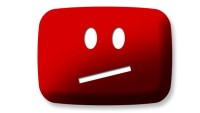
By MATT MANCUSO
It can be easy to forget just how young YouTube is. The site launched on Feb.14, 2005 to a humble beginning with a small number of users creating short, sub-10 minute videos for the platform. About a year and a half later, it gained enough popularity to be bought by Google for $1.65 billion – a monumental amount of money today, even more so a decade ago.
Today, YouTube is the world’s largest video sharing platform, publishing thousands of videos daily across hundreds of unique channels. But it can’t pay its content creators. The past couple of years, some creators have had to rely on fan donations to afford creating new content for their channels.
Every subject or hobby imaginable became viable to discuss on YouTube, and it wasn’t long before content creators placed their entire way of living in the website’s hands. Advertisements running before, during, and at the end of videos slowly became commonplace, making producing videos for the website many people’s way of staying afloat in a difficult economy. This became many people’s full-time job, and it worked for some time, until YouTube revised its advertising policy, negatively affecting content creators on their platform.
![]()
Because of this new policy, Websites like Patreon, where fans can directly support their favorite content creators to keep producing quality online work, have become an avenue that many YouTube creators have moved toward. But why is the system failing? Why is YouTube paying these channels less money, where previously it wasn’t an issue?
If you’re a frequent visitor of the video platform, it’s likely you have heard this complaint from YouTube content creators, either voicing their concern in videos or on their social media page. The answer to this dilemma lies in two words: advertisement agencies.
Like most problems we face, it all comes down to money. YouTube and Google rely on advertisements to bring in money for the platform, and advertising agencies thrive by featuring their content on various websites. But when disturbing or questionable content becomes featured on YouTube’s front page, advertisers don’t want to be associated with that content, and flee that website’s ad space.
It is understandable that large corporations don’t want their names attached to any dicey subjects, but when advertisers pull away from social media platforms, that means less money is being shuffled around, leading to less people being paid.

In early 2017, this lead YouTube to begin enforcing guidelines as to who can make money on their platform. Rule number one: Your YouTube channel has to reach a collective 10,000 views, and only then will you be considered a worthy addition to the YouTube Partner Program.
There are a number of other prerequisites needed to join the partner program, but this is the biggest hurdle. In a world where hundreds of content creators pop up daily, there’s never been a more competitive environment for views – and trying to make it big on YouTube today is a daunting task.
Criticism has been leveled at YouTube for enforcing this guideline, citing it leaves smaller content creators out to dry, while the channels with larger subscriber counts continue to make big money, despite the questionable acts they participate in.
Starting a fresh channel on YouTube today is a risky venture. If YouTube wants to continue to have a thriving community that keeps fans visiting the website daily, then they need to listen to the requests of their partners before they completely abandon ship.
When a worthy video sharing competitor arrives (because it doesn’t seem like Vimeo is willing to take that spot any time soon) it can be almost assured that many disgruntled YouTube creators will switch over to a new platform.
A very informative article – prior to reading this I didn’t know anything about YouTube’s economic inner-workings, and always wondered how it worked. Having a notable YouTube career is complicated, and you really explained the complexity in this article. One thing I’ll say is that it felt more like an informational/explanatory piece, and I think you could’ve focused more on the current events/”news” aspect. Good use of multimedia, and links!